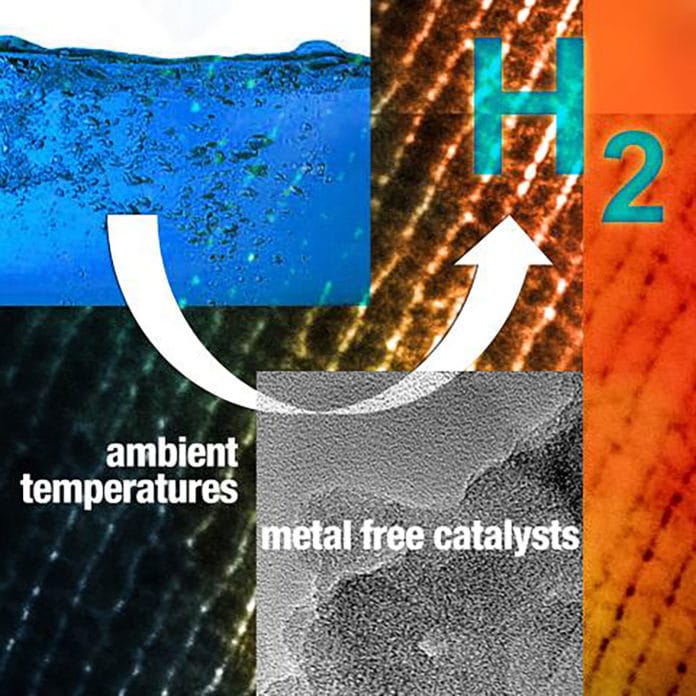Hydrogen storage is a crucial enabling technology for advancing hydrogen and fuel cell technologies. One of the ways to store hydrogen is chemically. Chemical storage allows large amounts of hydrogen stored in small volumes at ambient temperatures.
However, for the hydrogen to be useful, catalysts are needed to activate LOHCs and release the hydrogen. This process is called dehydrogenation.
Currently, there are other dehydrogenation methods, but they have some limitations. Other methods require additives to release the hydrogen. The additives are not reusable and result in higher overall costs.
Now, scientists from the U.S. Department of Energy’s Ames Laboratory and collaborators have developed a catalyst that extracts hydrogen from hydrogen storage materials quickly and efficiently. Unlike other catalysts, these catalysts do not require metals or additives.
The process occurs at mild temperatures and under normal atmospheric conditions.
Long Qi from the Ames Laboratory said, “It’s fairly simple. Just add the metal-free catalyst into the LOHC, and then the hydrogen gas is just popping out, even at room temperature.”
Scientists created the catalyst using nitrogen and carbon. The structure of nitrogen is the secret behind its efficiency. Thanks to its unique closely spaced graphitic nitrogens- a nitrogen assembly, catalytic activity can occur at room temperature.
The nitrogen assembly catalyzes the cleavage of carbon-hydrogen (C‒H) bonds in LOHCs and facilitates the desorption of hydrogen molecules. This process makes the catalyst more efficient than other catalysts in use.
Wenyu Huang from Ames Laboratory said, “The hydrogen storage capacity needs to be close to 6.5% by weight. We are optimistic about the future of their research to meet the goal with molecules that have a larger capacity.”
“This research will positively impact the target of reducing carbon dioxide emission, and we will need to develop more efficient catalytic systems.”
“This research is an important step to support the national mission to become carbon-neutral by 2050 by providing an easy and efficient way to dehydrogenate LOHCs.”
Journal Reference:
- Haitao Hu et al. Metal-free carbocatalyst for room temperature acceptorless dehydrogenation of N-heterocycles. DOI: 10.1126/sciadv.abl9478
